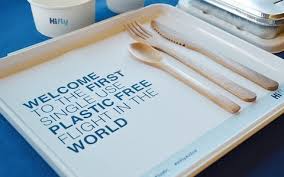
by wemakedo | Sep 20, 2019 | health, Plastic Free July, transport |
To whom it may concern at Aer Lingus,
I recently used your new transatlantic service from Dublin to Seattle and I found the service to be very good, in keeping with what I have come to expect from AerLingus as Ireland’s national carrier and a 4-star airline.
However, I am writing to highlight one aspect of your service that I was very disappointed with.
That is the amount of consumer plastic waste being generated on each crossing on this route.
Here is will highlight some specific areas that I noted on the flight which could be easily addressed and then I will finish by proposing that AerLingus has an opportunity to take a leading stance in improving on the waste generated from its inflight service when other airlines seem to be ignoring this very “front of house” and sadly very wasteful aspect of the service.
Firstly the travel blanket supplied to each customer is wrapped in a plastic bag only to be immediately removed and trashed without a second thought. I took a mini poll of other travellers to ask their opinion of the use of this wrapping. All (only 4 travellers) felt that this attempt to make one feel that blanket is “fresh” and “clean” is unnecessary when considering the resulting 300 bags being dumped from each flight. Perhaps there would be a less impactful way to convey to passengers that these blankets are fresh when received? Even a paper bag if a bag was really thought to be necessary?
Next each cup of hot beverage used was given in a disposable plasticised cardboard mug along with a plastic lid. I recall on flights taken in previous years where the drink could be poured into the cup received on the food tray and no plastic lid was required. Here I am considering the 300 (or perhaps multiples of 300) lids and cups being dumped from each flight. Perhaps even encouraging passengers to reuse these cups if they intend to have a second cup of tea/coffee might at least give a positive message and make passengers at least aware of the cumulative waste being generated. Perhaps a bring your own mug program could even be somehow incentivised (I know that we did on our flight and I noticed others doing this)
Next, the headphones provided to each passenger came in a disposable ziplock plastic wrap. This was immediately opened and 300 wrappers dropped/stuffed into pockets on the plane. Is this wrapping really helping anyone? On other airlines, I have noted that the unwrapped headphones were handed out after takeoff or simply left unwrapped on the seat, thereby avoiding yet another source of near-useless but highly damaging plastic wrapping.
Of course, then there was the food tray – a sea of single-use plastic. This is a more difficult one to address given the obvious constraints that airlines face in having to provide this service without adding to the service overhead for the flights. I do feel however that instead of following what other airlines have always done, there is room for AerLingus to lead the way in trying to slowly address the amount of disposable plastic arriving in each meal serving.
I did note on my flight that the second snack offered, was provided in a cardboard container without any plastic. Whether an intentional effort was made to reduce plastic in selecting this or not, I for one appreciated it.
I feel that more choices like this could form part of a concerted campaign on your part to address the amount of waste generated during flight and could be highlighted as part of a broader effort on behalf of Ireland’s “green” airline to make industry-leading efforts to be “green” in all aspects and to change the way inflight service is provided. The public relations benefit could be appreciable if AerLingus were to have an environmental impact statement with a declared intent to try to address inflight waste as well as perhaps the other impacts from the business process. I looked for but could not find any such statement online – nor could I find one for your nearest competitors either.
In fact I noted that a competitor of yours (Ryanair) was recently highlighted as one of the worst carbon polluters in Europe (not just of airlines but of all businesses). The air pollution aspect of flying is clearly a very difficult issue to tackle but I am urging you to tackle the easier and more obvious side of the inflight experience and thereby send a strong message to consumers.
You likely don’t need to hear yet another person reminding you of the effects of air travel on the environment, and as a user, I hold my hand up and will admit that I am a somewhat frequent user. But like many of us who feel we need to fly, I do think that there is a lot of scope to clean up the secondary waste stream being generated on these flights for no real gain to the consumer and perhaps at a cost to the airline (for example, time spent cleaning it up and disposal costs as well as no PR benefit).
AerLingus prides itself on its customer service and I note you are recognised for providing a 4-star service. Therefore I can understand someone making the decisions to use wrapping to add to a quality feeling that you think passengers are seeking. But I really feel this is misguided in its intent as many travellers these days are quite concerned about the overall impact of this form of transport and these methods have the very bad effect of delivering lots of additional plastic waste into our overburdened world.
I respectfully ask that you don’t ignore this request from a concerned customer and that even if you decide not to directly address these concerns (not just mine I assure you), that this concept could be taken on board and incorporated into your longer-term planning as to how you want to improve your future service. Perhaps AerLingus could take a lead that others might choose to follow.
I look forward to hearing more about what AerLingus can do to help alleviate the damage from this service in some small regard.
Yours sincerely
etc…
submitted to Aer Lingus customer care on September 19th.
By the way, the image at the top is from a report about a small Portuguese airline that took the action to make their service plastic-free this year. Seems like it can be done. If this really seems trivial compared to the impact of flying itself, then think of the simple message if gives to so many people who choose to fly – i.e. the potential effect it could have on passengers thinking by simply making this statement so clearly.
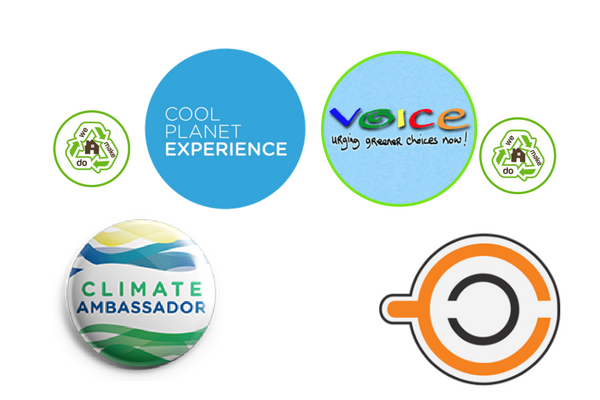
by wemakedo | Oct 6, 2017 | family, Plastic Free July |
“The wind of change is blowing through this (continent) country. Whether we like it or not, this growth of national consciousness is a (political fact) possibility?”.
– British PM Harold Macmillan in speech given in South Africa concerning decolonisation (with some modification)
Here in the WeMakeDo household, we try to ensure that we are at least considerate of our impact on our surroundings as best we can. We try to bring this perspective into all our family decisions because we feel it is a must for the sake of our kids’ future and the state of our surroundings.
With ridding ourselves of single-use plastic as our current focus, sometimes arguing over who “buckled” and bought another plastic bag of frozen peas or who owns the plastic water bottle that appeared in the bin may seem like we have nothing better to do. But to make the change stick, it’s important to question everything and to realise why it’s worth questioning these seemingly trivial everyday household decisions.
“When you bought that plastic bottle, you assumed responsibility for it now being part of our collective waste pile and for being a burden on the environment that your children will have to deal with as it hangs around for a hundred years!”. etc. etc. finger wagging included.
We don’t quite go that far….usually.
It’s easy to sometimes think that for every plastic bag of peas you forego (even though you love peas), that there are so many more being purchased and discarded that it can’t possibly make any difference. But it’s also important to remember that, as with any shifts in popular thinking, lots of seemingly small efforts to change the status quo can lead to tipping points in social behaviour which will then transform what is deemed acceptable behaviour by the majority. Think of smoking in public buildings or the use of plastic bags in supermarkets in our recent past. Granted these high profile changes were enforced by law in Ireland but how quickly they were accepted and generally lauded gives hope for other more subtle approaches to causing a change in our attitudes.
We have started to notice a significant groundswell of new awareness around environmental issues in Ireland in the last few months which looks to be part of a fabulous next step towards bringing the issues to national attention. There seem to be many new efforts now that when viewed collectively, seem like we have turned a corner in Ireland and people are taking this problem seriously.
Perhaps Mr D. Trump has inadvertently given rise to a reaction against his position on climate change that may, in the long run, bring about more change than if he hadn’t tried to declare it an overblown hoax.
Here are just a few examples we were delighted to learn about in recent weeks:
 Recently, you may have noticed the “conscious cup”advertising campaign encouraging people to bring their own cup when buying coffee. From a group of simply “concerned individuals” active on the Zero waste Facebook page, this effort aims to raise awareness about the approximately 200million cups we dispose of in Ireland (15 minutes after we purchase them).
Recently, you may have noticed the “conscious cup”advertising campaign encouraging people to bring their own cup when buying coffee. From a group of simply “concerned individuals” active on the Zero waste Facebook page, this effort aims to raise awareness about the approximately 200million cups we dispose of in Ireland (15 minutes after we purchase them).
Few people would argue in favour of this behaviour but until it’s pointed out to us, then it’s easy to just do as we’ve always done.

Cool Planet Experience and the EPA have launched a Cool Planet ambassadors program which will focus on educating the general public about how to respond to Climate Change:
“Once selected, the Cool Planet will train the 26 Cool Planet Champions to engage, educate and inspire the general public in their own county about how our changing climate directly impacts them and how they can make a real, practical difference.”

 In a similar program sponsored by An Taisce with support from the Department of Communication, Climate Action and Environment, National Climate Ambassadors are being appointed to help to stimulate awareness and change at a local level throughout Ireland. The program will look for the Ambassadors to take at least 4 specific actions in their locality aimed at raising awareness and educating the public on the effects of climate change in our lives.
In a similar program sponsored by An Taisce with support from the Department of Communication, Climate Action and Environment, National Climate Ambassadors are being appointed to help to stimulate awareness and change at a local level throughout Ireland. The program will look for the Ambassadors to take at least 4 specific actions in their locality aimed at raising awareness and educating the public on the effects of climate change in our lives.
 Voice Ireland have just finished recruiting for a recycling ambassador program on a national scale. This excellent program also aims to bring about change in our waste habits by means of education. The focus here is on improving recycling rates in Ireland and trying to remedy a national issue with the poor quality of our recycled waste. This large program aims to hire 25 paid ambassadors to help educate people on household waste management and how to recycle correctly as well as collect feedback on issues encounte
Voice Ireland have just finished recruiting for a recycling ambassador program on a national scale. This excellent program also aims to bring about change in our waste habits by means of education. The focus here is on improving recycling rates in Ireland and trying to remedy a national issue with the poor quality of our recycled waste. This large program aims to hire 25 paid ambassadors to help educate people on household waste management and how to recycle correctly as well as collect feedback on issues encounte red. It seems that while in Ireland the amount of recycling waste generated is reasonably high, the quality of this recycled waste stream is not so good due to cross contamination. We’re not so good and putting things in the correct place to ensure the individual recycling or composting waste streams are “clean”.
red. It seems that while in Ireland the amount of recycling waste generated is reasonably high, the quality of this recycled waste stream is not so good due to cross contamination. We’re not so good and putting things in the correct place to ensure the individual recycling or composting waste streams are “clean”.
The hope is that this program will generate useful feedback for government bodies to use in making the process easier for people to use, leading to improved levels of recycling.
 Another example we were delighted to read about this effort in the Dail led b
Another example we were delighted to read about this effort in the Dail led b y the Green Party to legislate for reduced packaging:
y the Green Party to legislate for reduced packaging:
Bill entitled: An Act to provide for a ban on single-use non-compostable cups and other tableware and for the introduction of deposit and return schemes for beverage containers
The proposed bill which has yet to make its way through approval aims to ban non-biodegradable coffee cups and other tableware.Hopefully, this overdue response to a significant source of landfill waste will be successful.
To help understand the incentives which may be helping to drive this increased focus we have been noticing, the EPA publishes a report on how we are doing nationally on our waste handling. This report shows our performance against EU targets set for Ireland and it appears we are doing quite well.
In the table below, (ref: EPA- Progress towards EU waste targets – August 2017) the 2020 goals for “recycling” (paper, metal plastic and glass) as well as for waste quantities to landfill are shown. We were probably no waste angels in 1997 – the year our targets are compared to but dropping to 35% of that amount in 23 years sounds impressive. Having met our 2013 reduction goals, it’s looking good for the 2020 goals also, but clearly, more focus is needed to make sure this stays on track.

It’s very inspiring to see groups like Voice Ireland, “Zero wasters” and others stepping up to contribute to this transition process and make us pay attention. Mrs WeMakeDo was delighted to be awarded one of the ambassador roles in the Voice Ireland program and is looking forward to helping with their process.
Shifting people’s habits on a national scale takes dialogue, focus and a lot of effort, but it’s how the big results can eventually come about. Let’s hope we are witnessing a new tipping point in Ireland and that these great initiatives can cumulatively swing us in a new direction for the better.
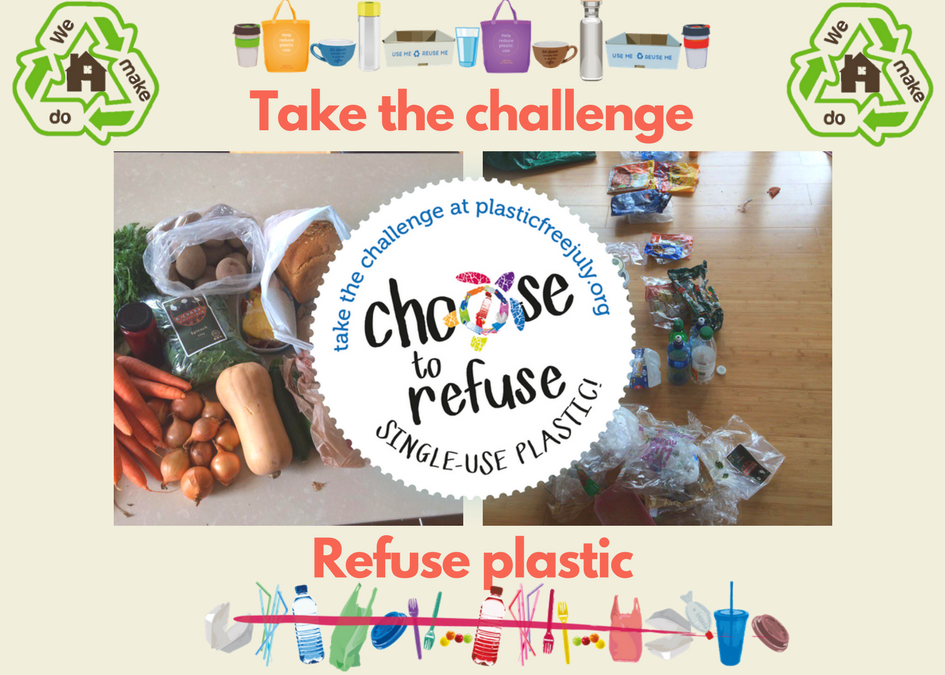
by wemakedo | Jun 29, 2017 | Plastic Free July, reuse, Uncategorized |
It’s been a year since we dabbled in Plastic Free July 2016 and now it’s upon us again.We’re happy to say that we have more enthusiasm to try it out again this year and are already well positioned in that many of our plastic-free habits have stayed with us since last year.
The biggest difference for us this year has been in going with a local fruit and veg seller who manages to remove all the packaging from his produce and will deliver to our home weekly. The other change we made is that we can purchase from a wholesale bulk foods distributor based in Macroom (http://www.iihealthfoods.com/) who carries everything you could want in large quantities.
For our first trial run, we bought:
25Kg of porridge oats (in a paper sack), 25Kg of puy lentils, 25Kg of red lentils, 25Kg or brown rice, 20kg of raisins
This is just an experiment to see how well the stuff holds and how long it lasts. In some cases, the cost savings are not much, but the reduced packaging and time spent purchasing seem well worth the effort. We are also still buying bulk nuts from www.nutsinbulk.ie, although haven’t convinced those guys to try removing the plastic from their supplies.
Sigh…only to have a bulk food store locally…we think this would really work as a business, but so far it hasn’t happened yet as far as we know.
This year rather than just try harder to keep the single-use plastic out of the house, we are setting a couple of specific goals for ourselves during the month.
- Get self-sufficient on milk alternatives
- Find other options for laundry detergent and toothpaste
As we have moved away mostly but not completely from cow’s milk, for health reasons, we have started buying more and more of the expensive non-dairy options, such as soya milk, almond milk, coconut milk, rice milk, oat milk, and my personal favorite, a coconut and almond milk blend. Lots of options to choose from and they are quite expensive to buy (€2 to €2.6 per litre), not to mention all the tetra packaging that goes with them.
What’s more shocking about these milk alternatives, is that many of them use minuscule amounts of the main ingredient (2-5%!!) and most of what you are buying is water with some sweetener and stabilizers added. Once you spot this on the pack ingredients, the idea of making you own is a lot more palatable.
And none of them are hard to make, although they can be a little time consuming. But in each case we’ve tried so far, they taste better than the store-bought options.
We opted for an easy start with coconut milk. Our first experiment used a can of light coconut milk we happened to have. One recipe looked particularly simple and called for just diluting a can with 2 cans of water and adding salt and vanilla flavoring to taste. It was quite palatable – certainly no worse than the market bought versions. The preferred method for this is to soak shredded coconut, rather than starting with the canned milk, which tends to have water and other stuff added to start with.
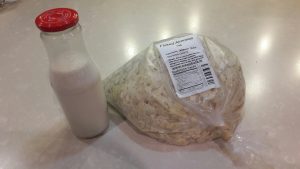 Then we tried almond milk – letting a cup of almonds sit for 2 days in the fridge in water to allow them to soak and release an acid that is best removed. Then they were drained and rinsed, fresh water was added (2 cups for 1 cup of nuts) and blended at high speed. Some sweeteners of choice can be added to flavor, such as honey, vanilla or even dates blended in. This one worked really well and got the thumbs up from the kids.
Then we tried almond milk – letting a cup of almonds sit for 2 days in the fridge in water to allow them to soak and release an acid that is best removed. Then they were drained and rinsed, fresh water was added (2 cups for 1 cup of nuts) and blended at high speed. Some sweeteners of choice can be added to flavor, such as honey, vanilla or even dates blended in. This one worked really well and got the thumbs up from the kids.
The coconut milk didn’t get much support, but then neither did the shop bought stuff either.
Rice milk is a little more time consuming to make. It requires you to boil the rice in advance and then use the rice to blend with water. Then add vanilla or cinnamon to taste as usual. Not that hard and quite tasty too.
For now we’re going with almond milk in quantity to see if we can get into the habit of making do with it. Apparently it should last for a few days in the fridge, so reasonably sized batches will work
For our #2 goal this time round, we recently attended a “Zero Waste” event in Dublin and managed to source some options for laundry detergent and toothpaste. The detergent is apparently condensed soap shavings which can be used to dilute into detergent of varying strength. Rather ambitiously, the two jars (reused also) we bought should apparently last for a year. We’re a little skeptical but getting ready to try it out.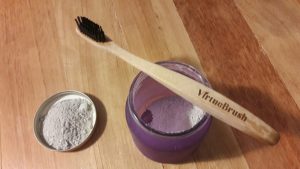
For the toothpaste, we bought some dry powdery “stuff” – a sort of clay with all sorts of healthy things added in apparently. I think its Bentonite clay – at least I hope it is – which has excellent absorbing properties, presumably absorbing stuff that you don’t want on your teeth. The idea is to add a little powder to the wet toothbrush and the particles of clay will do the cleaning job as you scrub without damaging tooth enamel. The other natural ingredients serve to fight bacteria. So far we have noticed that one’s teeth do feel very clean after using it, but I for one miss that minty fresh taste you get from standard pastes. The jury is still out on this stuff for now – one for and one against.
So we have mostly removed the plastic from our food supplies by now, but WOW does it spread around the house through other means when you’re not paying attention! Having children makes this so much harder as much of what seems to come their way is made of plastic and has a very short lifespan.
Also, changing topics, our Poly-tunnel is finally up and running now so we’ll let you know how that’s working out in the next update.
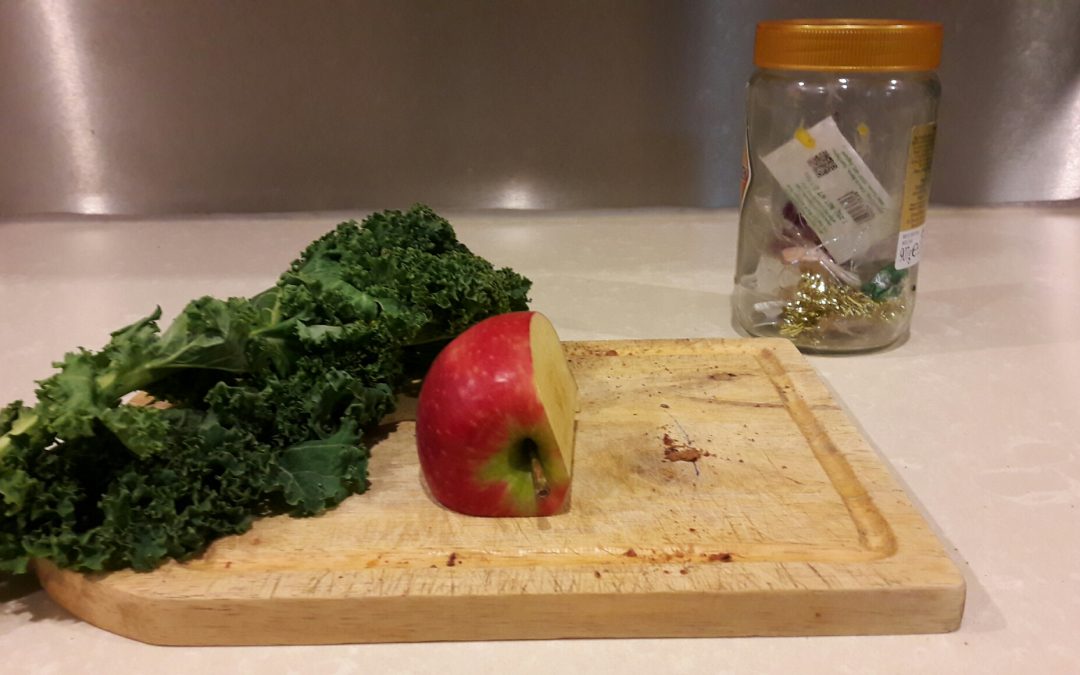
by wemakedo | Dec 3, 2016 | Plastic Free July |
It’s been a few months now since we started trying to minimize our household waste. The strange thing is that it’s been a lot easier than expected to keep ourselves at the much reduced waste level compared to where we were at initially …but very hard to progress beyond it.
We kept our glass jar on the counter as our waste bin so as to keep the focus for everyone in the house. We regularly comment on how full or empty its looking but generally speaking the half liter sized jar fills up in a week or so.
Not bad.
But then a plastic “recycling” bin crept back into use and it has a life of its own.
With kids, it seems nearly impossible to control the level of plastic coming into our house. Things like birthday parties, gifts from well-meaning friends and one-off purchases for them keep catching us out.
The Kitchen and general household stuff that goes into the glass jar/bin is well under control at this stage because we are now used to managing our regular household purchases. But there seems to be an endless stream of unusual plastic rubbish coming our way – sometime too big to fit – and so we’ve kept a larger recycling bag on the go.
Let’s focus on the positives first though. We have kept the habit of buying at farmers markets and SuperValu – still the best chain for unpackaged fruit and veg. And we have managed to maintain all our regular food related purchases at near zero waste level. Our old bin under the sink hasn’t returned, and neither have any of the other bins around the house. And we’ve gotten used to not looking for them and instead stuck with our new means of disposing of things.
For example when wiping down the table after a particularly messy meal, the stuff now goes either to composting or the chickens. Or in rare cases when cooked leftovers stay in the fridge too long and need to go, we have resorted to flushing them down the toilet. A perfectly fine option when not done too often.
For some items we still can’t find plastic /waste free alternatives and so we have done the best we could..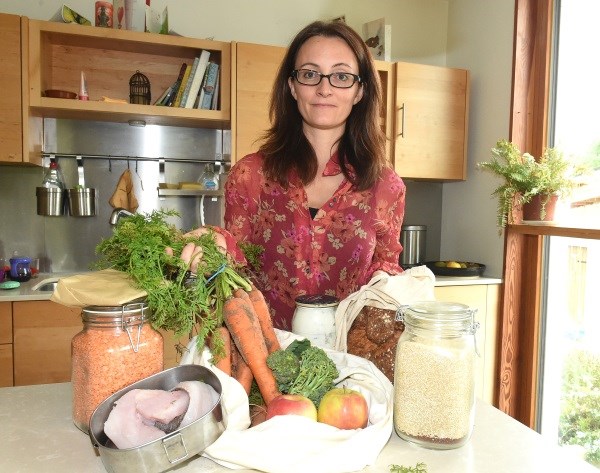
For example the raisins we now buy in large bulk (plastic) bags from Nutsinbulk. But it involves a lot less packaging waste than we used to create using the small plastic packs of raisins.
Our milk we now get mostly from “Siopa gan Ainm” on CornMarket street in Cork. They get it from a farm in Clonakilty – it costs €1.50 for a liter and you get 50 cent back when the bottle is returned.
Yoghurt and cereal are still all home-made now and the kids prefer the granola over other cereals, while porridge has always been available in paper bags. We’re looking into a possible source of large bulk bags of porridge too as we seem to burn through the stuff at a high rate – especially with granola making.
We’ve even been investing in some stainless steel containers to avoid putting the foods like fish or cheese into plastic reusable containers. One starts to feel like plastic should be avoided anywhere food is involved.
We haven’t figured out a way to source butter in some recyclable or unpackaged form.
Reusable nappies and non-disposable wipes (aka rags) has become second nature now for our youngest who has another couple of years of nappied life to go.
We bought bamboo toothbrushes, but have found that they’re not as nice to use as the regular plastic ones. This is more to do with the basic design of the bristles and their texture than the handle, but not sure if we’ll buy those again.
Shampoo bars are now second nature too for everyone in the family.
Toothpaste is still a problem.
We tried and failed to find toilet paper that isn’t wrapped in plastic too. Although we have a plan here…the use of bidet guns are the way to go. We might write about this in the future if modesty permits.
Also our composting has become a little more flexible and so some cooked foods are now going in there where we can’t figure out alternative…i.e. waste food that neither cats nor chickens would eat. So far this seems to be fine as our composters are good and big. But we’re conscious that too much may start to make the composters smell, so we won’t abuse this option.
We have taken one batch of non-recyclable waste for disposal since we started this back in May/June which is nice. This is down from what ordinarily might have been about 3 or 4 batches, but we do intend to try to improve this further
All in all making these changes, although daunting in the beginning are proving to be very easy to stick with. It feels like another push is needed to improve further – perhaps in the New Year, but we don’t seem to have slipped back into old habits and are planning to stick with this.
Our appearance in The Examiner drew a lot of feedback from our friends, and it was nice to hear of people who enjoyed the article and felt motivated to try similar efforts in their own homes. From a grandmother who’s now getting her grown daughters to shop plastic free, to another friend who asked for a shopping consultation!
Others felt that “we must have too much time on our hands” which we thought was an interesting viewpoint. In response to that, like with most things, we all have less time than we would like. Getting certain things done just means that you move things up your priority list. I.e. you will do things that you feel are most important to get done first and other things will always fall off the bottom of the list. For us, this waste problem suddenly felt very important, and how we were going to respond to it became even more important. Suddenly there was less time for watching a movie or for reading a book and more time given to making homemade granola or yoghurt or trying to find bulk raisins.
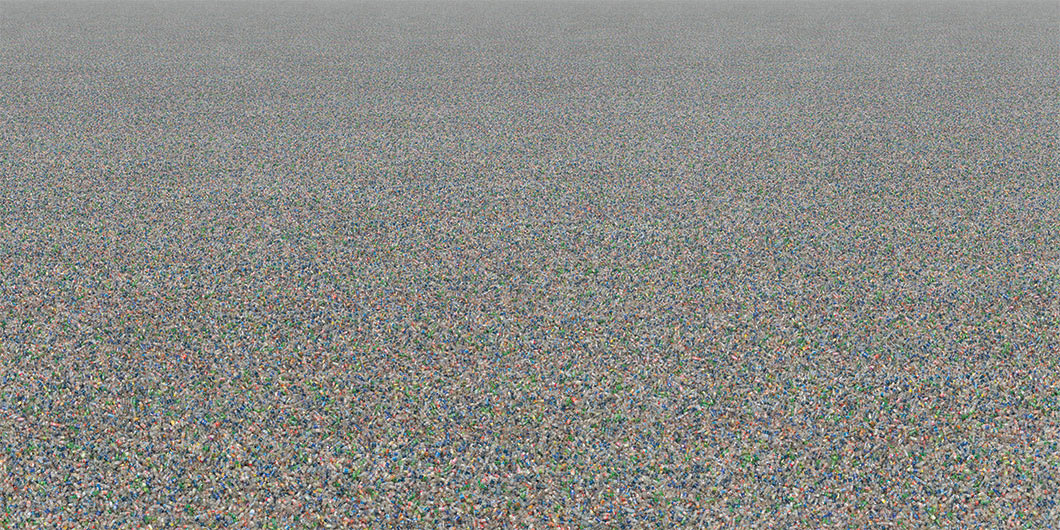
by wemakedo | Jul 15, 2016 | Plastic Free July |
Plastic Bottles, 2007. by Chris Jordan
Depicts two million plastic beverage bottles: the number used in the US every five minutes.
As our “Plastic Free July” (PFJ) experiment continues, we have passed through the trough of disillusionment and are now on the upswing of more realistic hopes coupled with some renewed enthusiasm for the task at hand. Our plastic recycling bin although not in as good shape as we’d hoped, is much improved over earlier months. Most of the contents are a result of earlier purchases being used up and also from items left behind by visitors (more on that later).
We were starting to learn to live without purchasing some things that we just couldn’t find in any non-plastic packaged form, then it became apparent that some of those food items could be made at home from raw ingredients that weren’t so heavily packaged. A simple example of this is with pizza’s which the kids love (and the parents love even more). Premade, frozen pizzas tend to come on a styrofoam or cardboard base, wrapped in plastic and then in an outer cardboard box. Making your own pizza base is quite manageable and choosing your own toppings is a bonus. Those worked out well and the kids loved doing them. We tried this base recipe.
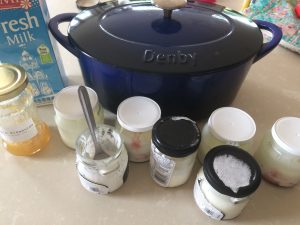
Homemade Yogurt
A less obvious example is yoghurt – which tends to be sold in plastic pots. We had resorted to buying the very expensive “gourmet” yoghurts in little glass jars, but, it turns out that yoghurt is quite easy to make in volume while getting to add your own preferred flavour.
A friend came to visit one afternoon during the week and brought some fruit for a picnic with the kids. The fruit came wrapped in LOTS of plastic and so during the ensuing conversation about whether she might perhaps take her packaging home with her instead of adding it to our PFJ pile, it became clear that she thought what we were trying to do was somewhat pointless in the face of so much packaging in the world anyway.
Another friend who was leaving for a holiday trip, wanted to give away their left over fresh food instead of discarding it. So we said yes, but of course that meant taking on the plastic packaging too – it more than doubled our plastic waste to date (by mid July) in one go.
The sheer futility of the cause is certainly one to ponder…some figures say that 9 million tonnes of plastic find their way into our oceans EVERY DAY! Or that closer to home, Ireland is generating over 140,000 tonnes of plastic waste annually, that 50% of will go into a field (also known as a landfill) and will take 200+ years to break down releasing harmful by-products. The featured image above from artist Chris Jordan aims to help to convey one of these staggering metrics.
According to PlasticsEurope, the European trade association for plastics manufacturers, 265m tonnes of plastic are produced globally each year (2011 figures). In the UK, about two thirds of this is for packaging; globally, this translates to 170m tonnes of plastic largely created to be disposed of after one use. (Ref The Guardian newspaper). That’s MILLIONS of tonnes….per year…hard to comprehend.
Even scarier aspects of this hidden problem come to light when one goes digging: for example, the use of microbeads of plastic in body products (scrubs, shampoos and even some toothpaste). These plastic beads are too small to be filtered from water streams and so are finding their way into all water systems and then into our food chain. Look for “polyethylene” in the ingredients.
In 2002, the then minister for the environment took the brave stand against the use of plastic bags for grocery packaging by introducing a levy to curtail their pervasive use. Ours was the first national government to do so. It seems that in the aftermath of this change, there was universal support and everyone though that in hindsight this was the right thing to do. We all understood the benefits of trying to tackle a very obvious waste problem and it has to be said that the solution in this case was somewhat inconvenient. Many other governments have since followed along with some choosing to go even further and ban the use of plastic bags. Remember when we all though smoking in cinemas, airplanes and even hospitals was acceptable? That is until we realized it wasn’t and that we could change it!
Societal attitudes can change quickly when the problem and solution path are presented well. Since we made that excellent change to the use of plastic bags in 2002, the amount of plastic packaging from other sources in Ireland has surged to the point where we have long since overcome those earlier gains, but of course this problem is more hidden from most of us as thankfully, we are a cleaner society now than we used to be and we don’t see as much discarded plastic waste around.
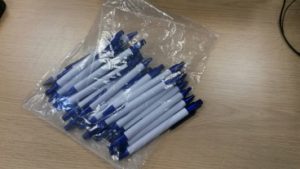
some unwanted pens
It’s still piling up somewhere though and we should be under no illusions that its being dealt with in a sustainable way. The best solution that exists now and is accessible to everyone is to try to reduce it at the source. We realized that this is the important point: the private buyer has the most power.
Just as I was finishing this entry, a well-intentioned work colleague dropped this on my desk: 20 promotional plastic pens in a plastic bag that “would only be thrown away if someone didn’t use them”.
I sat looking at them for while…feeling sad.
We have a long way to go but this is something we can all help with.
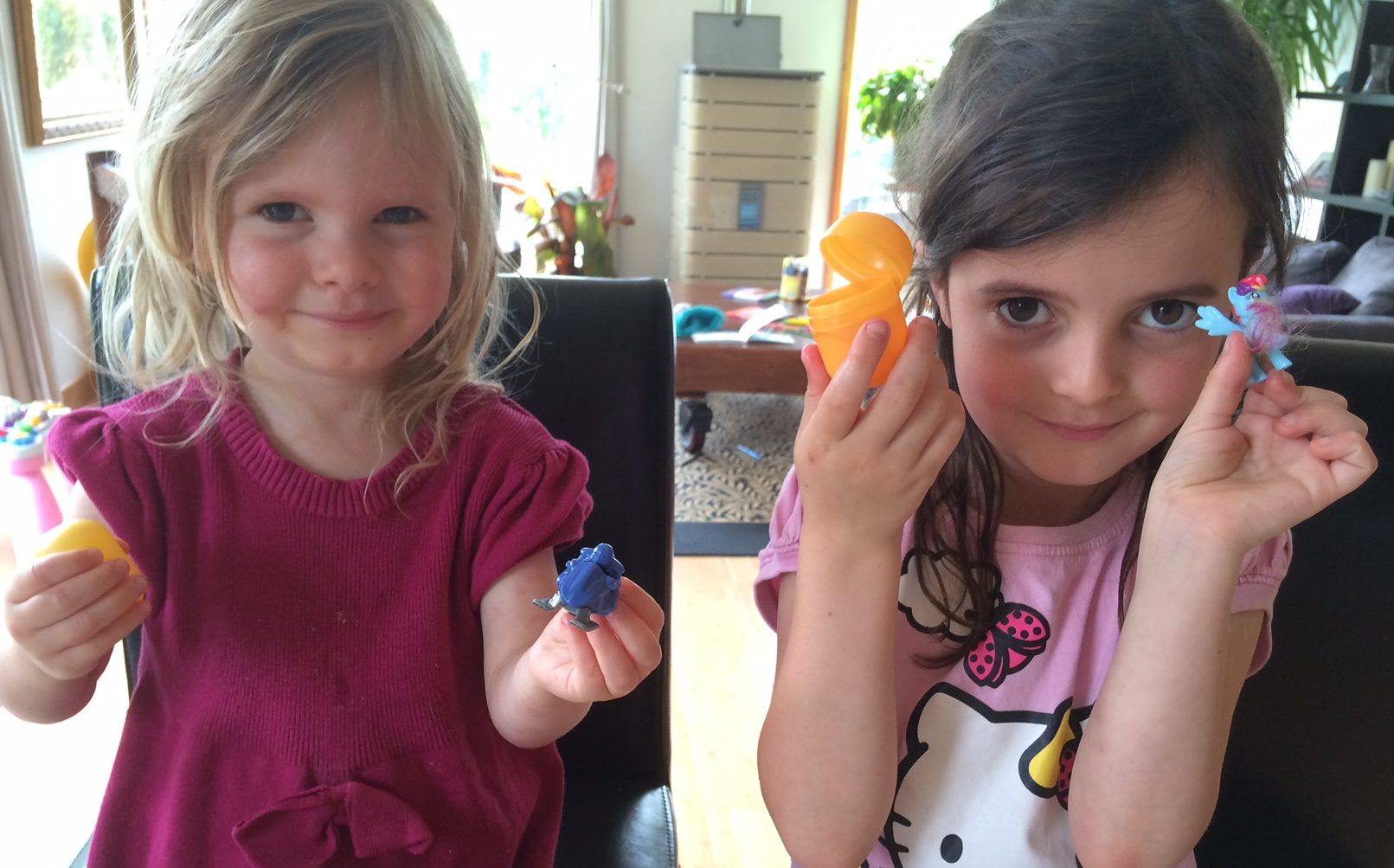
by wemakedo | Jul 9, 2016 | Plastic Free July |
Trying to avoid buying plastic for the month of July is coming with its daily challenges as we use up household things that happen to come in plastic containers, and then realise that we can’t simply run out and buy more of the same. It’s an interesting process – self imposing a new discipline on oneself that creates some difficulties until you remind yourself of why you’re doing it in the first place and renew that conviction to find another way.
We share the washing up in our house and so it was a lottery as to who would use the last of the washing up liquid and who would then be faced with figuring out the replenishment plan. We ran out on day 2, a Saturday, and so Mrs Makedo had the pleasure of tackling Sunday night’s pile of dishes with only our trusty (non-plastic) loofah sponge, but with no suds to help. We had to wait until Mr Makedo went to Cork Monday morning, when he could stop into the Quay Coop to refill of “Ecover” washing-up liquid (Similarly for washing machine detergent by the way). Problem solved and another plastic bottle in the world avoided.
We are learning that running a home without brin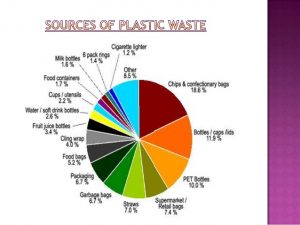 ging in plastic is challenging for sure, as plastic is by far the most pervasive packaging material in our lives. The chart shown (courtesy- Google) gives an indication of the relative size of different plastic waste streams in the U.S.
ging in plastic is challenging for sure, as plastic is by far the most pervasive packaging material in our lives. The chart shown (courtesy- Google) gives an indication of the relative size of different plastic waste streams in the U.S.
Unusual items will catch you out – for example, buying a Sunday paper meant that we couldn’t pick from the ones with the plastic wrapped magazines inside. Surely someone could figure a way to secure all the pieces of the Sunday Times together without having to wrap them in a plastic bag? That’s a lot of waste plastic every Sunday for little utility gain it seems, but as the marketers understand, it does give the feel of a quality product for some reason which may be why it’s done that way.
As a treat for our two girls, we gave them some Kinder chocolate eggs which a friend brought on a recent visit. Somehow forgetting they had stuff inside, we had some laugh when the plastic toys popped out. It was only day 3 and we were already getting caught out in so many places. Maybe the cute plastic toy will stay in use for the month of July so we don’t have to add it to our tally.
Later this week, having learned from our first mistakes, another treat for the kids took the form of a yoghurt in a glass jar which went down well and left behind a nice glass jar to be reused again.
We were also at a summer party at someone’s house over the weekend and as there were a lot of adults and kids to feed, the plastic knives, forks and cups were in circulation. It was a little disheartening until we saw them all being collected by our excellent hosts, in order to be washed and reused again at the next party.
We are compiling our list of sources for plastic free household options, and will post that shortly, to be updated as we go through the month.
In case you needed more data to inspire you, here are some rather disturbing facts about plastic waste: http://ecowatch.com/2014/04/07/22-facts-plastic-pollution-10-things-can-do-about-it/
- Over the last ten years we have produced more plastic than during the whole of the last century.
- 50 percent of the plastic we use, we use just once and throw away.
- Enough plastic is thrown away each year to circle the earth four times.
- We currently recover only five percent of the plastics we produce

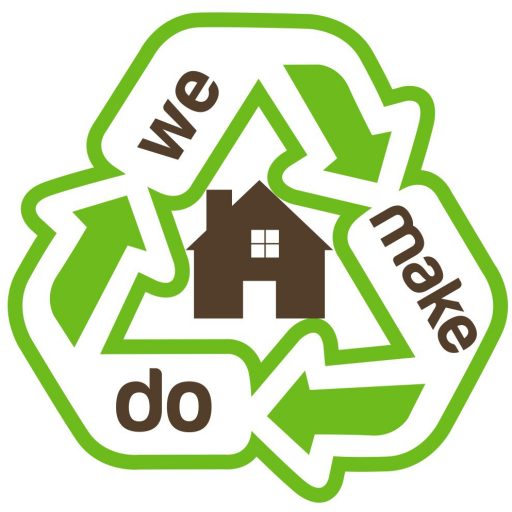


 Recently, you may have noticed the
Recently, you may have noticed the 

 In a similar program sponsored by An Taisce with support from the Department of Communication, Climate Action and Environment,
In a similar program sponsored by An Taisce with support from the Department of Communication, Climate Action and Environment, 
 red. It seems that while in Ireland the amount of recycling waste generated is reasonably high, the quality of this recycled waste stream is not so good due to cross contamination. We’re not so good and putting things in the correct place to ensure the individual recycling or composting waste streams are “clean”.
red. It seems that while in Ireland the amount of recycling waste generated is reasonably high, the quality of this recycled waste stream is not so good due to cross contamination. We’re not so good and putting things in the correct place to ensure the individual recycling or composting waste streams are “clean”. Another example we were delighted to read about
Another example we were delighted to read about  y the Green Party to legislate for reduced packaging:
y the Green Party to legislate for reduced packaging:










